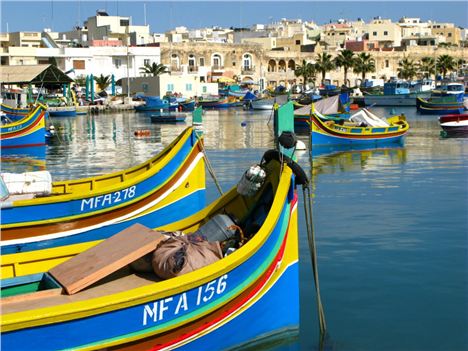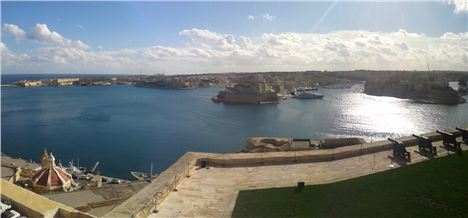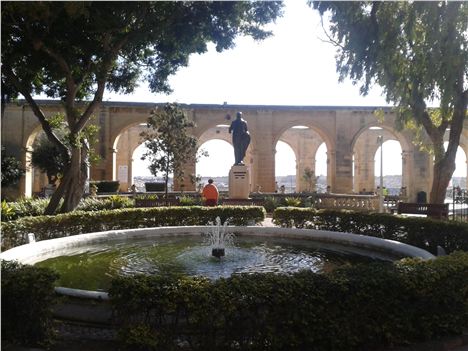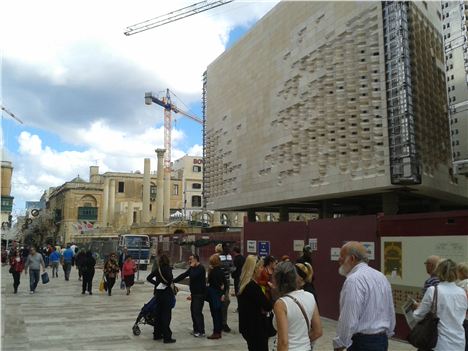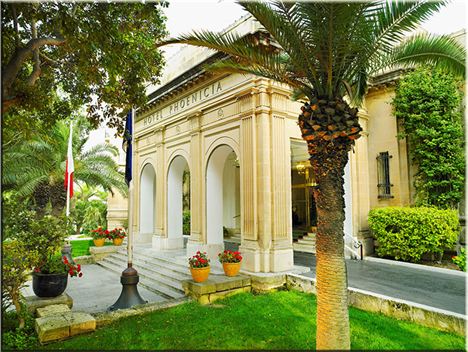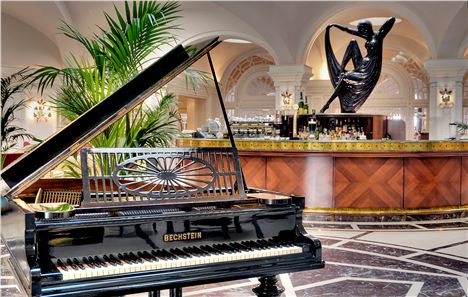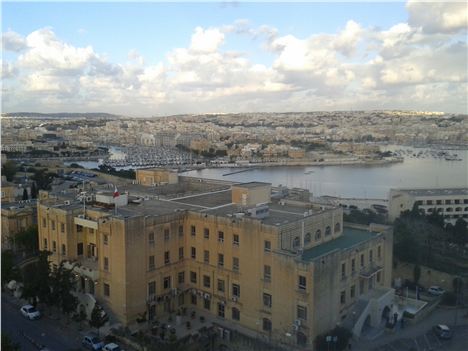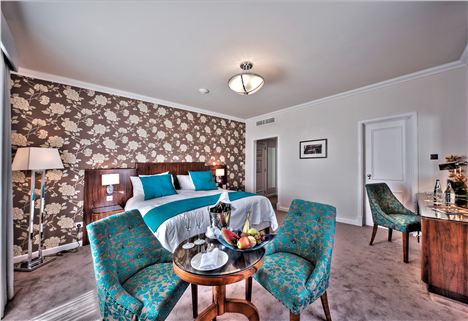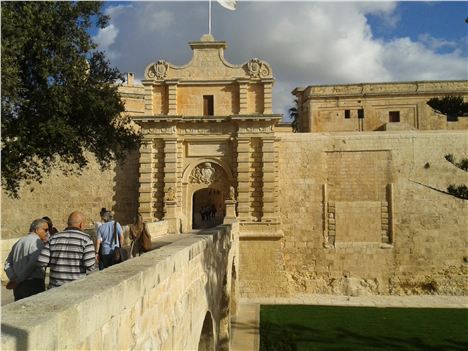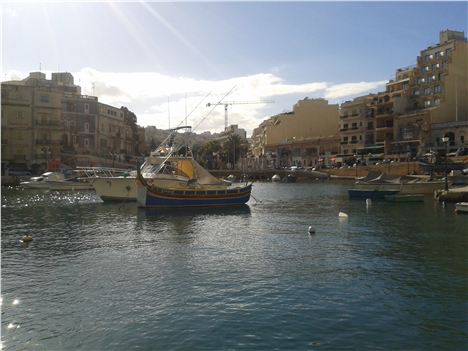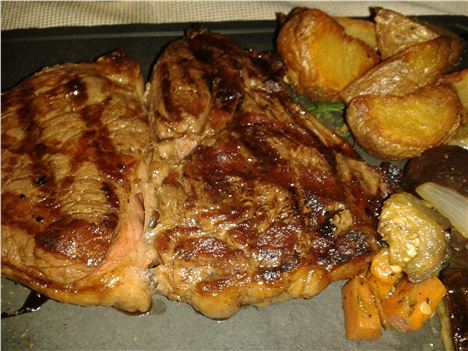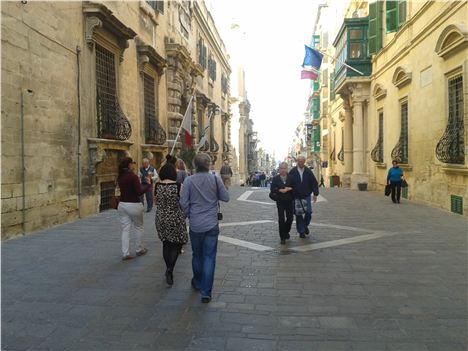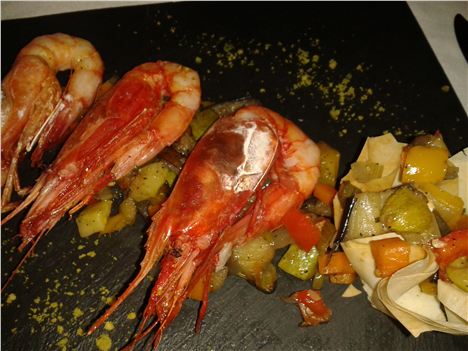“WE Maltese can be quite a lazy people,” explained the neat barman as he poured my neat gin.
Roam the streets and the offshoots, become mesmerised, quit your job, buy a studio, paint from the galleria, trade in olives, fall in love with a peasant girl named Ziza.
That may explain why, throughout history, this tidgy Mediterranean archipelago floating between Siciliy and Tunisa has been conquered by just about everybody. Geographically speaking, Malta is beautifully placed for a spot of trading and fighting.
So it’s been a turbulent 7000 years or so.
The Phoenicians, the Carthaginians, the Romans, the Vandals, the Byzantines, the Arabs, the Normans, the Spanish, the Knights of St John, the French and finally us Brits have all been, seen and stayed before someone bigger and tougher came along.
We Brits only left in 1979, when the last of our troops scarpered and the Union Jack felled from public office. The Maltese still hold a natural affinity for us Brits, mind, a George Cross awarded by King George VI in 1942 still adorns the Maltese flag, English remains the joint official language and they still drive (as they ruddy should) on the left.
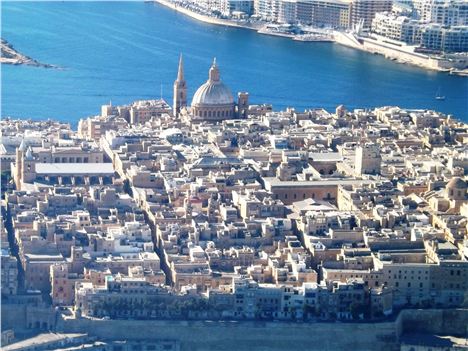 Valletta by day, from the sky: Dome of Carmelite Church in the distance
Valletta by day, from the sky: Dome of Carmelite Church in the distance
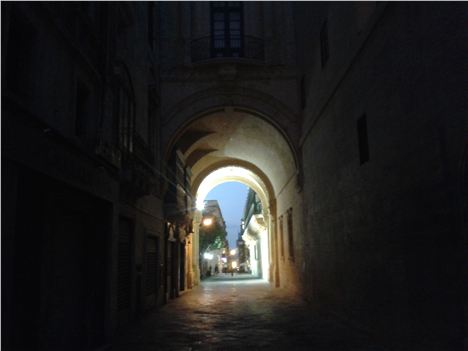 Valletta by night, from the street
Valletta by night, from the street
But what this stream of conquerors has afforded the Maltese is a myriad of cultural gains. A confined (17 miles long and nine miles wide) and centralized melting pot of transcontinental traditions, practices, beliefs, folklore and linguistics absorbed by the islanders through the millennia.
Semitic tales, Sicilian ballads, Arabic inscriptions, devout Inquisitor enforced Catholicism, buckets of Baroque, Mediterranean cuisine and fiestas, an often bolshy Italian temperament, competitive chariot racing, improvised folk music duelling and a Semitic-Arab mother tongue, the only of its kind within the EU, with heavy borrowing from Italian, Spanish and Norman-French yet somehow widely understood in parts of North Africa. Hotch-potch bunch this lot.
They’ve even taken to a spot of Ruggers, ranked marginally above Kazakhstan but slightly below Madagascar. Good on ‘em.
Of all Malta’s finest facets, there are four of which you’ll see just about everywhere: Sunshine, limestone, old stuff and old stuff built from limestone basked in sunlight. This island boasts more historical monuments per square kilometre than any other country in the world.
It really is everywhere you look. Word has is that Tony ‘Time Team’ Robinson dare not even visit the island for fear of pulling a Kurtz.
Mysteriously constructed megalithic ruins scatter the island and are widely considered to be the oldest free-standing buildings known to man, even predating the Egyptian pyramids. Making our Stonehenge look like a bunch of stacked up iPads.
There’s Bronze Age tombs, Roman townhouses, enough churches on the island for one each day of the year and three UNESCO Heritage sites, one of which is the majestic city of Valletta, the capital city of Malta.
As far as capitals go, Valletta is pretty teeny, with a population of less than 7000. Still, what it lacks in populace it certainly makes up for in trippers.
The arrival of a handful of large cruise liners alone into Valletta’s five fingered Grand Harbour (one of the world’s largest and most dramatic natural harbours) can easily double the population of the city. We’d recommend you visit in either March or November (as we did) when temperatures sit around 20°C. Unless tripping over hordes of tea-towel cruisers while baking is your thing. Then I'd go in August.
For a spectacular view of the Grand Harbour bear right after entering the capital’s new city gates towards Upper Barrakka Gardens. Breathe it in.
Built by the Order of St John after the Turk Ottoman’s failed siege of Malta in 1565, this fortress-city ‘built by gentlemen, for gentlemen’ (careful) was one of the first ever cities to use a gridded street system, with twelve streets running perpendicularly to nine, giving the whole city a structured yet graceful blocky quality.
Built on a peninsular, Valletta is framed by sea on three sides, boasting cobbled streets, sun-kissed squares, terracotta potted porches, narrow off-shoots, painted window boxes, boundless Baroque and neo-classic architecture and little hunched Maltese woman about the size of your thumb doddering about the streets. The city rests beneath a desert beige limestone blanket, as though everything has been touched up in restrained gold. It’s hard to imagine a place more charming. Postcard Malta at its finest (until you get to Mdina, but we'll save that for later).
 St John's Co-Cathedral limestone exterior
St John's Co-Cathedral limestone exterior
St John’s Co-Cathedral, slap-bang in the middle of the city on St John’s Street (or Triq San Gwann, prefer the Maltese version) is a must-see-to-be-believed such is its interior opulence. Commissioned by the Grand Master of the Knights of Malta in 1572, the interior of the cathedral became a blank canvas for the Knights to splash their cash. Not only were the Knights pious, but also disgustingly wealthy.
Ornate carvings, meticulous paintings, marble floors, grand statues, bombastic tombs and enough gold lick to make Midas have a duck fit.
If your eyes can withstand the assault then make your way through to see the Co-Cathedral’s two Caravaggio works, the colossal Beheading of St John the Baptist and St Jerome Writing. Remembered as one art history’s true gits, the celebrated Italian artist, boozer, bruiser and thorough pain-in-the-arse was taken in by the Order following the artist’s escape from Italy having murdered a man in a bar fight.
The Order couldn’t have been more chuffed to adopt a famous Italian painter. The peace was short lived. In less than two years the Order expelled Caravaggio after wounding a high-ranking Knight in another bar fight. A right rascal that Michelangelo Merisi o Amerighi da Caravaggio. Blame all the lead.
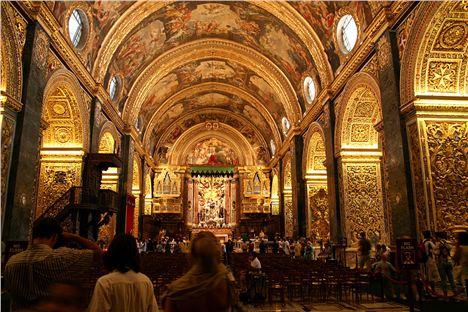 St John's golden interior: An assault on the eyes
St John's golden interior: An assault on the eyes
 Caravaggio's Beheading of St John The Baptist
Caravaggio's Beheading of St John The Baptist
A young Benjamin Disraeli once said of Valletta: “The city is one of the most beautiful, for its architecture and the splendour of its streets, that I know."
However, not all is perfectly pretty and placid in the capital. The city is currently undergoing a minor facelift, and as seems to be the case in Malta, you either love it or loathe it. The temperament won't suffer fence sitters.
The previous Maltese government commissioned the ‘TIME Top 100 Most Influential’ Pritzker Prize winning ‘starchitect’ with the most Italian name ever, Renzo Piano (London’s Shard and The New York Times Building), to design the capital’s new City Gateway. The fifth such attempt in as many centuries.
An €80m project including new city gates, new parliament building and a conversion of the bombed-out Opera House into an open-air theatre. So what's the problem?
Well, vast sections of Maltese society are passionately protective of their UNESCO status, quite right too, so: it all looks too new, too modern, cost too much and the open-air theatre has GREEN PLASTIC seats. Piano you bastard.
In truth, it's much ado. The new gates look infinitely better than the 1964 throw-up, the new Parliament with its 7000 limestone blocks quarried in Gozo and laser cut in Italy is a spectacular construction and the open-air theatre is just common sense. Nobody wants to hear Scarpia bang on indoors when it’s near 40°C outside.
And if you’re going to allow a Burger King to sit just inside the city gates then Piano’s sprinkle of modernity is the last of your troubles. Nothing so nicks at the heels of modern architecture like the grip of nostalgia.
A hop step and jump outside of Piano’s new city gates, by the bus terminal where the aged and sage old men of Valletta still gather, waiting for an old rickety bus that’ll never come (they’re all glossy Arrivas now), sits the splendour of the Phoenicia Hotel.
Situated within seven acres of landscaped gardens and beneath the imposing fortifications of Valletta, the Phoenicia is the grand old Duchess of Maltese hotels. The first luxury hotel to be erected on the island, initiated in 1935 by Lady ‘Queen of Malta’ Strickland as a haven for hobnobbers, the hotel was absorbed by the RAF during the 2WW and subsequently bombed to buggery.
Still, rise again did the immovable Phoenicia, and a bloody good job too, because it’s a fantastic and grandiose place to stay, with a smallish and surprisingly contemporary pearl of a restaurant, the Pegasus, attached. The chef Saul (or Sol? Could have been either, or neither) is a virile and talented young chef with green fingers. Proud as punch of his hotel vegetable gardens, our troop was marched out to gaze over his produce and quaff yet more wine. This lot would see me gouted given time.
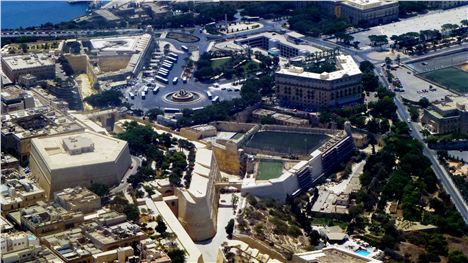 Phoenicia to the right, Valletta to the left
Phoenicia to the right, Valletta to the left
Stepping across the marble into the hotel’s airy and regal Palm Court has an imperial quality. All pianos, palms, columns, arched coffered ceilings and dickie-bowed barman calling you 'Sir'. Poised in one of the court's swallowing armchairs you half-expect some Lord Toffington to plonk down by you, all khaki-socked, pink-knee'd and flustered, chugging brandy and discussing the merits of Hubert Parry.
Circumnavigating the Palm Court's outer corridor you may happen across a photo of Queen Elizabeth in the Phoenicia's ballroom, as if to hammer home the grandeur of it all. It works actually.
If you get the chance, lay claim to a westerly facing room, the higher the better. Why? Well, this...
Just over seven miles west of Valletta and perched astride a rocky green crag sits Mdina, the oldest city on the island (dating back 4000 years) and the highlight of our time in Malta. To say the ‘silent city’ and Malta’s first capital city is enchanting is like saying Tokyo is a bit busy. It really doesn’t do this ancient walled city justice.
The temptation here is to reel off just what makes Mdina so, the shady noble streets, the convent, the alcoves, the uninterrupted serenity (except for the cars tooting up your backside, Mdina should see these banned), the cloisters, the touch of the Jerusalems. But I shan’t - I did a bit. And don’t Google it, don’t even look at my photos. Go to Mdina. Roam the streets and the offshoots, become mesmerised, quit your job, buy a studio, paint from the galleria, trade in olives, fall in love with a peasant girl named Ziza, serenade her from the cobbles and marry. The end. Think Michael Corleone and Apollonia.
Laying scenically to the north-west of Mdina sits the Meridiana Vineyard. Malta, unlike its Med neighbours, is not renowned for its wine production. But there’s been movement, mutterings, accolades and a patter of activity on the island in recent decades. None more so than at the Meridiana, spread across 47 acres in Ta’ Qali, central Malta. The culmination of a meeting in 1985 between a wine trader and a Bordeaux oenologist (that’s wine-scientist to us serfs), in which the latter persuaded the former that there was the potential to produce high-quality wine in Malta, the Meridiana now prides itself on producing Maltese wine from Maltese-grown grapes. No imported grapes, no table grapes, no sugar, just the good stuff.
Unfortunately, domestic demands upon the vineyard mean that very few bottles (aprx. 150,000 bottles produced a year) make it to export, so pick up a bottle or two after a tour of the winery. The pick of the litter being the Isis (the Chardonnay of Malta), with the Maltese glugging more of this fresh, honeyed and lemony stuff than any other. You’ll be hard pressed to find a restaurant in Malta without a stash of Isis. Except the crap ones. Snatch one while you can.
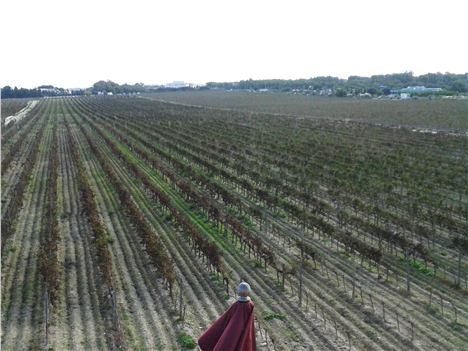 A Roman legionnaire standing guard over the vines
A Roman legionnaire standing guard over the vines
The playground of Malta lays ten minutes drive north of Valletta around the bay of St Julian's area, a hive for both the fleshy young-bloodied and chino’d yachters. The majority of the neon buffoonery is resigned to the Paceville area, leaving the more genteel Spinola Bay a fantastic place to do lunch overlooking the bay and admire the sheen on your Sunseeker. Gululu is just the place, an idyllic Med waterside terrace restaurant reeling out fine Maltese cuisine. Which is mostly fish and rabbit. A lot of rabbit. Being a rabbit in Malta is like being a whale just off the coast of Japan. You may as well jump in the pan. Although commonplace in Med kitchens, rabbit stew does however seem odd in such a hot climate and far too robust for waterside white wine dining. Go fish. It’ll make more sense.
Further north and tucked just above the harbour of St Paul’s bay, Tarragon is a lavish and design-heavy restaurant boasting ‘an enviable panorama across the bay’; at least that’s what our envoy told us, being black outside it was hard to tell. The fare here was Mediterranean-fusion, a trendy but bothersome label (not the Med bit) since all food is a fusion of sorts. It’s a term that allows crackpots to shove foie gras in a yoghurt and label it a Franco-Greek fusion, or just Duck-Muller. Still, the grub here is splendid stuff, meticulously crafted, slate-plated and served with the precision and efficiency of a calculator by Volvo. The ‘warm octopus’ is infinitely better than it sounds, the steak (yes I ordered a steak, I was famished) is exactly as good as it sounds and the size of your average baby. Bring an extra wallet.
Malta took me by surprise. Being an Italophile since childhood, I'd mostly discounted Malta as a holiday destination. If food, wine and lots of old stuff is your bag, then why fly past Italy, Corsica, Sardinia and Sicily when there's still so much to see, do, taste and fall for there? Awfully obtuse of me, but that's the truth.
And what a moron I'd been.
It's such a captivating, culturally-heavy and gorgeous island (and that's without even touching upon Malta's pretty sister island of Gozo, the greener one) that it's clear to see why everybody has been brawling over the islands for thousands of years. It's like the prettiest girl in the playground. Coveted.
Speaking of pretty, I'm going back to Mdina to jiżżewġu me a Ziza.
Follow David8Blake on twitter
Fact file:
How to get there:
There are direct flights from Manchester to Malta available seven days a week from Air Malta and Easyjet. An Air Malta return economy saver starts around the £150 mark in off-season, closer to £250 in peak-season. You can pick up an Easyjet return starting around £125 in off-season, but peak-season will set you back near enough £300.
Staying there:
Classic double/twin rooms at the Phoenicia Hotel start around €120 (£100) per night. If you stay for a minimum of five nights you can get 20% off the daily rate.
A week at the Phoenicia, b&b, flights and transfers in April with Thomson Holidays from Manchester costs £742pp. Thomas Cook £816.
Eating there:
Pegasus at the Phoenica, Valletta: Mains from 18euros
Gululu, St Julian's: Pasta from 8euros. Meat from 16euros
Tarragon, St Paul's Bay: Mains from 20euros
Information:
VisitMalta here.
Meridiana Winery tours, Ta'Qali, email here. +356 2141 5301




